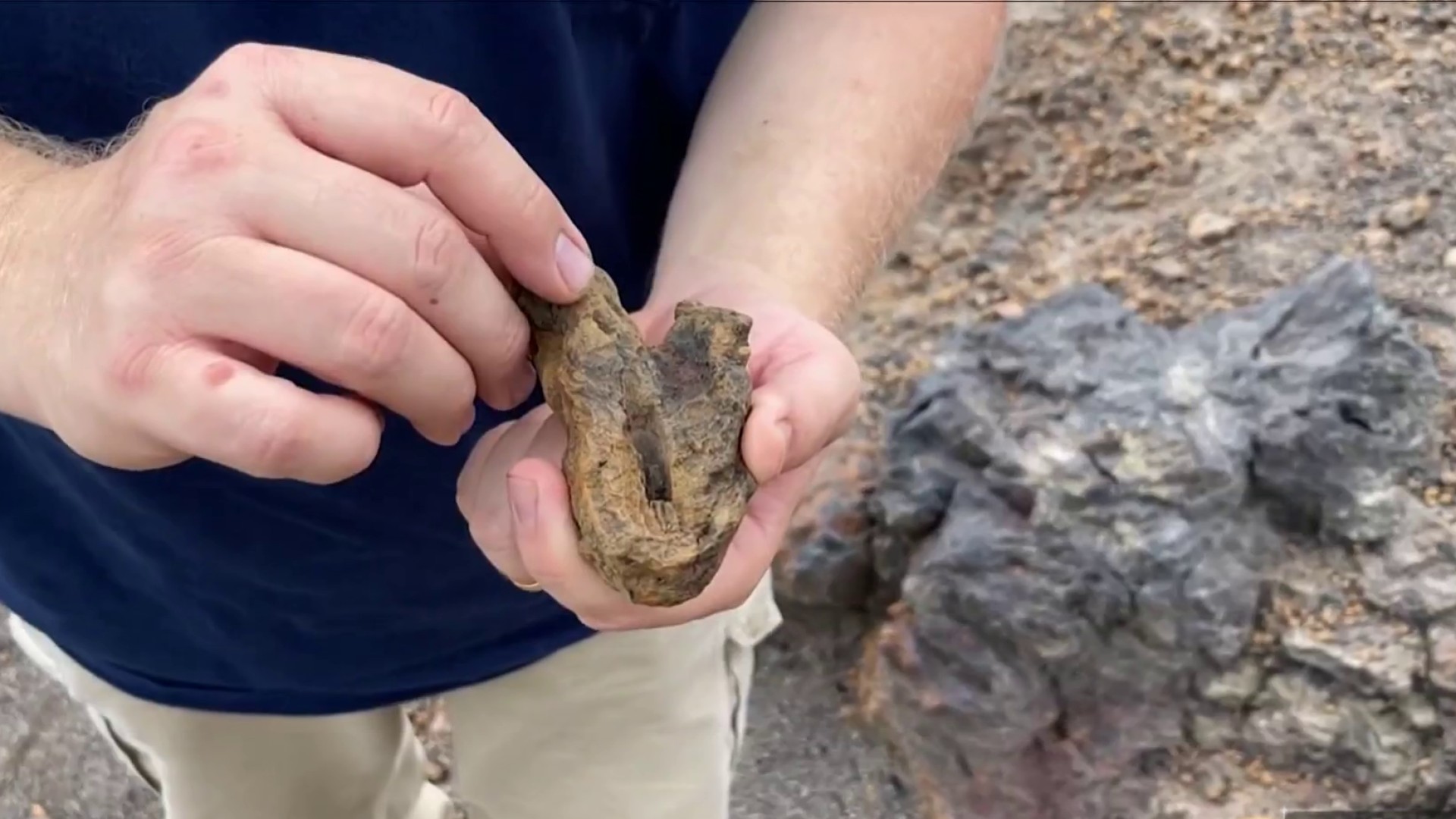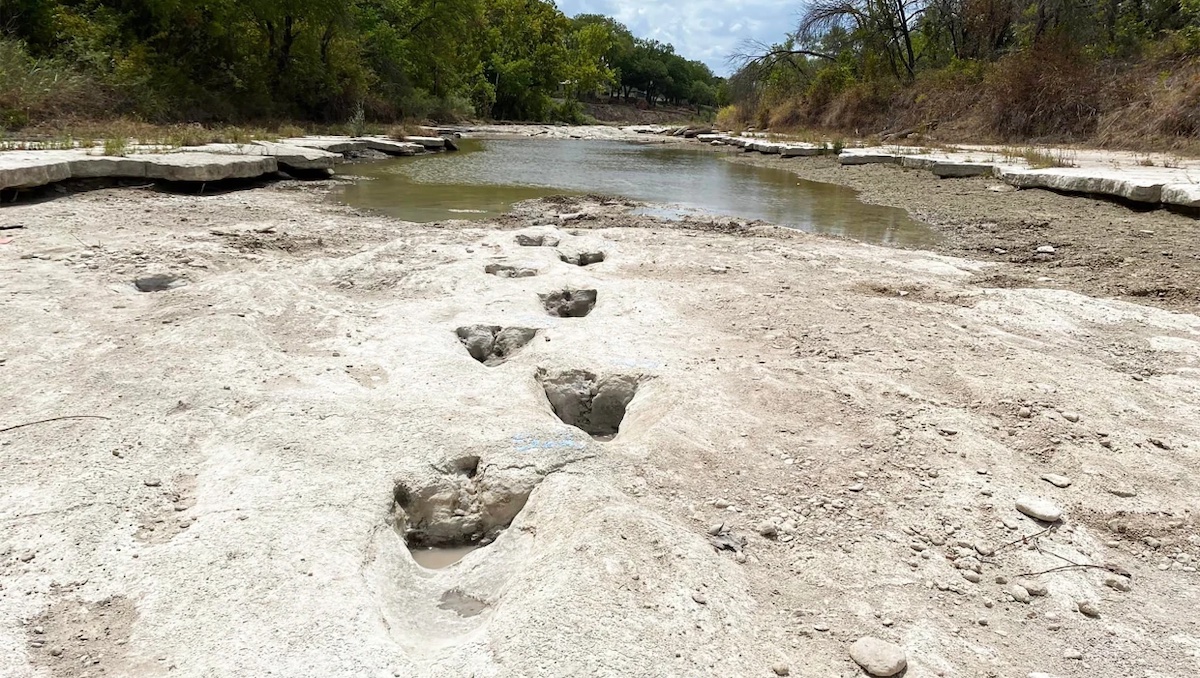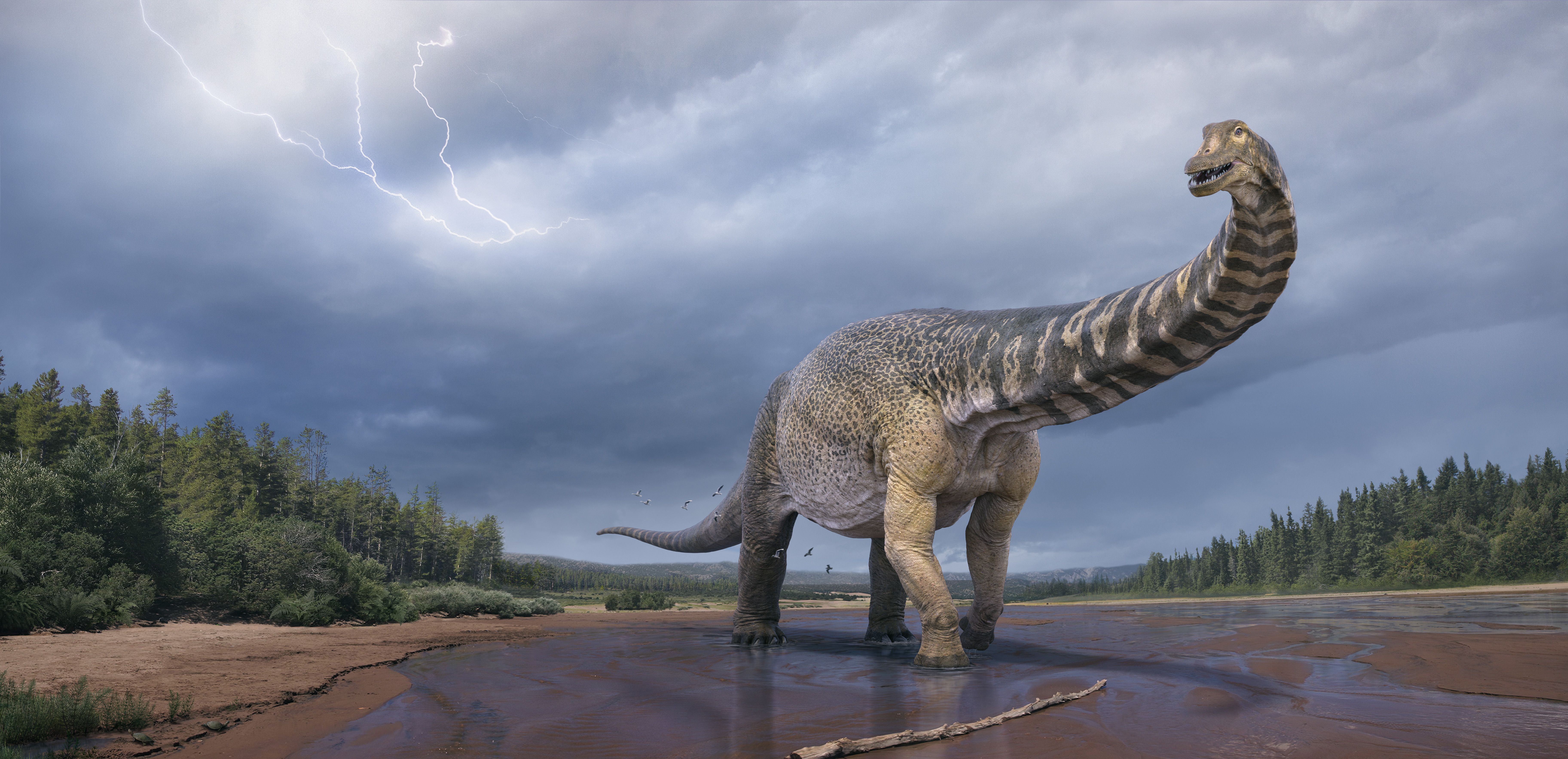It's a big day for dinosaur fans everywhere ... but especially on the East Coast.
Paleontologists in Dinosaur Park, a public park and active dig site in Prince George's County, announced what they say could be the most significant fossil find in Maryland since the 1800s.
Scientists recently discovered that the park in Laurel, Maryland, is home to what paleontologists call a bone bed. It's the term used when one or more species are concentrated near each other, in the same geologic layer of the Earth.
Millions of years ago, an ancient river bed carried dead dinosaurs and plants down in the current. When the detritus got stuck and sunk into the silt, it got covered. Over millions of years, the organic stuff decayed, and the holes got replaced with minerals, turning the bones and plants into rock. (The Smithsonian has more about how fossils are formed here.)
We're making it easier for you to find stories that matter with our new newsletter — The 4Front. Sign up here and get news that is important for you to your inbox.
If enough stuff gets trapped in the same place, it ends up turning into the kind of rich bone bed paleontologists are digging up in Laurel.
Bone beds are usually uncovered in dry places with little vegetation or greenery, and not much urban development -- think the Gobi Desert in Asia or Patagonia in South America. The dinosaur bone beds that people typically think about in North America are found further west, toward the Rocky Mountains.
"Dinosaur fossils are exceptionally rare in the eastern U.S., and among these only Maryland has produced dinosaurs from the Early Cretaceous Period," said Matthew Carrano, a paleontologist with the Smithsonian, in a news release announcing the discovery.
Those fossils are also often only found one or two at a time, he added.
But now, in an undeveloped chunk of land in the middle of a heavily industrialized section of Prince George's County, less than an hour from Washington, D.C., paleontologists have found a gold mine for the fossil record.
"It is certainly the most significant collection of dinosaur bones discovered along the eastern seaboard in the last hundred years,” Carrano said.
The discoveries began rolling in when paleontologists clearing away brush in 2018 chipped a rock and began to see a four-foot long bone taking shape.
In the intervening five years, paleontologists have found a vertebra from a Priconodon -- an armored, plant-eating dinosaur -- as well as a vertebra from the tail of an unidentified long-necked herbivore, the claw and ankle bone from an ostrich-like dinosaur, and several fossils of some of the earliest flowering plants, among other specimens.
One of the most exciting discoveries was the three-foot-long leg bone of a large, meat-eating dinosaur. It belongs to a theropod, which is a branch of the dino family that includes carnivores like the T. Rex. But this dinosaur lived about 50 million years earlier than that.
JP Hodnett, a paleontologist with Prince George's County Parks and Recreation, believes it belongs to an Acrocanthosaurus, a 12,000-pound, meat-eating apex predator that called Laurel, Maryland, home about 115 million years ago.
Isolated teeth and parts of leg bones from Acrocanthosauri have been found in Dinosaur Park before, so the dino calling Prince George's County home isn't news.
But usually, leg bones like that of the Acrocanthosaurus are found in those more typical desert-area bone beds.
The Dinosaur Park leg bone, first discovered on Earth Day 2023, is "the first of its kind to ever be found on this side of the United States," Hodnett said during a Wednesday morning press conference about the bone bed and the fossils discovered there.
"Finding a bonebed like this is a dream for many paleontologists," said Hodnett in the release.
More fossils in one place, all clustered together, means paleontologists can understand more about each fossil and why the creatures they came from might have been in the same place. That provides more information about the ancient environment overall.
If paleontologists find lots of bones from the same dinosaur, said Tom Holtz, a paleontologist with the geology department at the University of Maryland, "then we can understand its evolutionary relationships, its anatomy, its function, a lot more."
The more intact fossils in this newly announced bone bed could change the game when it comes to knowledge about dinosaurs that called the East Coast home when they roamed the earth.
"The dinosaur site at Laurel is by far the most important dinosaur dig site in America east of the Mississippi," Holtz said in the release.
Because the moist, greenery-filled land of the East Coast isn't as good at preserving bones as the geology of the Rocky Mountains, "Our knowledge of the dinosaurs from the eastern part of North America has been lacking compared to what we know about in the West," Holtz explained during the press conference Wednesday.
With the fossils found and identified at Dinosaur Park over the past five years and into the future, that could change.
That information about the past could also help scientists to predict the future.
"We can use insights from moments earlier on geologic time to reconstruct how climates change in response to fluctuations in CO2, of sea level, and so forth," said Holtz. "And how those changes might drive patterns of extinction."
But in the meantime, Dinosaur Park -- and its many fossils -- lie waiting to be discovered. You can click here to learn more about how the public can help paleontologists with their work.
“Most paleontologists have to travel across the country or go overseas to find something like this," Hodnett said, "so having this rare find so close to home is fantastic!"




